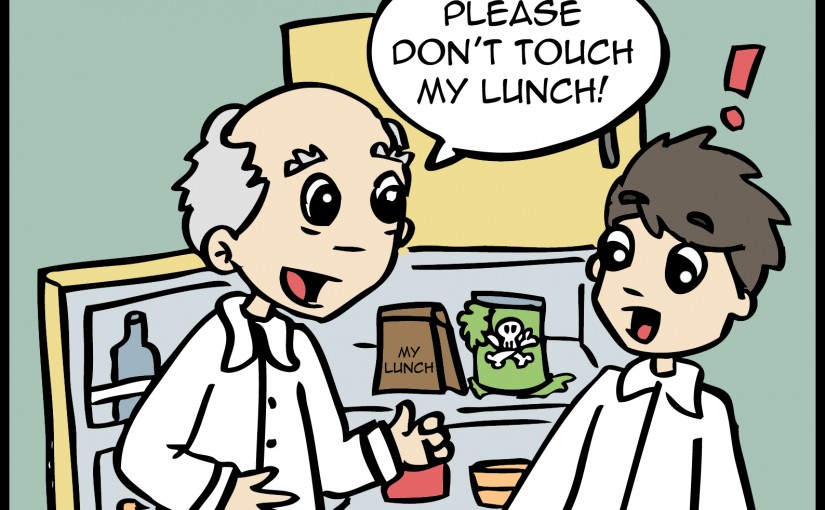Undoubtedly, you will have to go through some safety talks. Hopefully, these will include stories of pyromaniacs and people releasing noxious chemicals in lifts.
One thing they may leave out is that we know a lot of stuff is dangerous now that wasn’t thought to be a problem in times past. In some cases your supervisor’s safety standards will be laxer than they should be. They have been doing these procedures for a while and may have gotten lazy.
Always consider for yourself whether something is safe and ethical.
Get Practical Tips- You should do a written risk assessment before a new experiment, but if for some reason you haven’t, at least think about the possible outcomes of each step.
- If other people are involved always consider the impact of your work on them as well as yourself.
Get Wet Lab Tips
- Check the hazard labels on any chemicals the first time you use them.
- After finishing a procedure involving nasty chemicals, immediately change gloves. This will prevent you spreading those chemicals around your work area.
- If you are itching, or worse burning, immediately remove your gloves and wash your hands.
- Touching skin to water is not sufficient. Hold the hand under until you are bored and rub with soap. Taps are not magic cleaning devices, and some stuff sticks more than you would think.
- Always check whether a new chemical needs to be used in the hood.
- Know what chemicals are in “buffers”. As science relies more and more on buying kits which do most of the procedure for you, you will find yourself using nondescript things like “buffer QP”. It may sound like it is basically water, but that doesn’t mean it is.
- Don’t reuse gloves. The procedure is likely to get whatever is on your gloves onto your hands.
Read Personal Perspective
I once knew a supervisor who used to keep his sandwiches in the fridge next to the ethidium bromide (a potent carcinogen), which he thought was perfectly safe. It wasn’t… though on the plus side no one ever stole his lunch.
I have also had a nasty experience with a nondescript buffer, which I researched only after I’d splashed it in my eye. Although the initial burning was disconcerting enough to head straight for the eye wash, my later edification as to its content made me return to give it a second shower.
In addition to washing my eye for longer, I would have been more careful when using the buffer had I known.
Have you made similar mistakes? Share your experiences or feelings about this guideline in the comments below, or just give it a thumbs up.
